There was an emergency bridge here before, as the provision of rail transport was important to everyone, including the Red Army, so Soviet passengers built an emergency bridge as early as April 1945. However, this could only be used for a while, it was inevitable to build a new crossing as soon as possible. Fortunately, the technical background for this was given. In war, at least in clashes since the advent of the railways, armies were prepared not only to blow up bridges but also to pull up new structures very quickly if needed. This was no different in the case of the Hungarian army, where at the end of the 19th century, fast-assembled bridge structures were developed that could be assembled anywhere, to provide a railway connection.
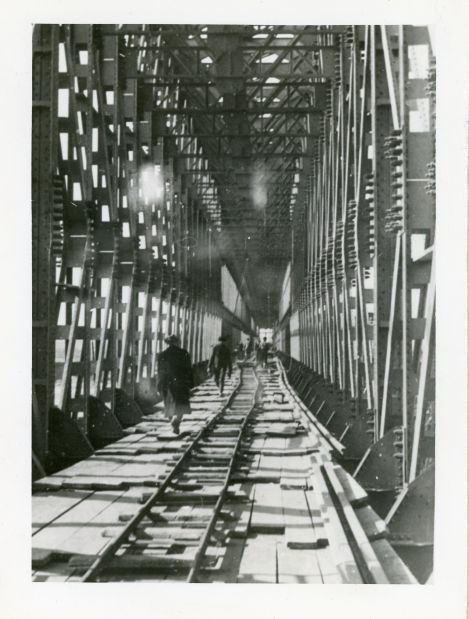
The bridge from the inside (Photo: Hungarian Museum of Science, Technology and Transport/Collection of Historical Photos, No.: 2234.1)
These structures were, of course, constantly developed by the armies. At the Hungarian Institute of Military Technology, engineer and Lieutenant Colonel László Feimer developed the structure in the early 1930s, which was also used at the Connecting Railway Bridge. The bridge consisted of elements of a transportable size that can be screwed together on-site, which could be used in one, two or three rows on top of each other, depending on the distance to be bridged. If the elements were bolted together in two rows on top of each other, on the side view, it looked as if the bridge consisted of huge letters “K”, hence the well-known name, “K” bridge. (The "K"-Bridge on the Hajógyári Island is the same structure.)
A significant part of the substructure was available, and it was even possible to build the new single-track bridge in such a way that it would not interfere with the construction of the later two-track final bridge. The principle was the same as what can be seen now, in the reconstruction of the bridge, that the new one will be built next to the working bridge or bridges since the pillars were so wide that two bridges could fit side by side. This came about because, in 1913, a new railway bridge was built next to the working old bridge. Of course, the war destructions had to be repaired, and the “K” structure also needed some remodelling because it needed higher pylons.
 The structure that was blown up in World War II, in 1930 (Photo: Hungarian Museum of Science, Technology and Transport/Collection of Historical Photos, No.: 2018.863.12)
The structure that was blown up in World War II, in 1930 (Photo: Hungarian Museum of Science, Technology and Transport/Collection of Historical Photos, No.: 2018.863.12)
The bridge required a total of 2,315 tons of iron material, compared to the much shorter Chain Bridge where more than double the mentioned weight of the iron was installed. As it was a military bridge, the warehouses had a significant stock ready for use, so in times of scarcity at the time, it was extremely important that only 1,432 tons had to be produced. Because the structure was fixed with screws, an incredible number of 110,000 screws were used. Construction began in July 1946. Another peculiarity of the structure is that it did not require large scaffolding, but could only be built with smaller supports and cranes placed on the structure itself.
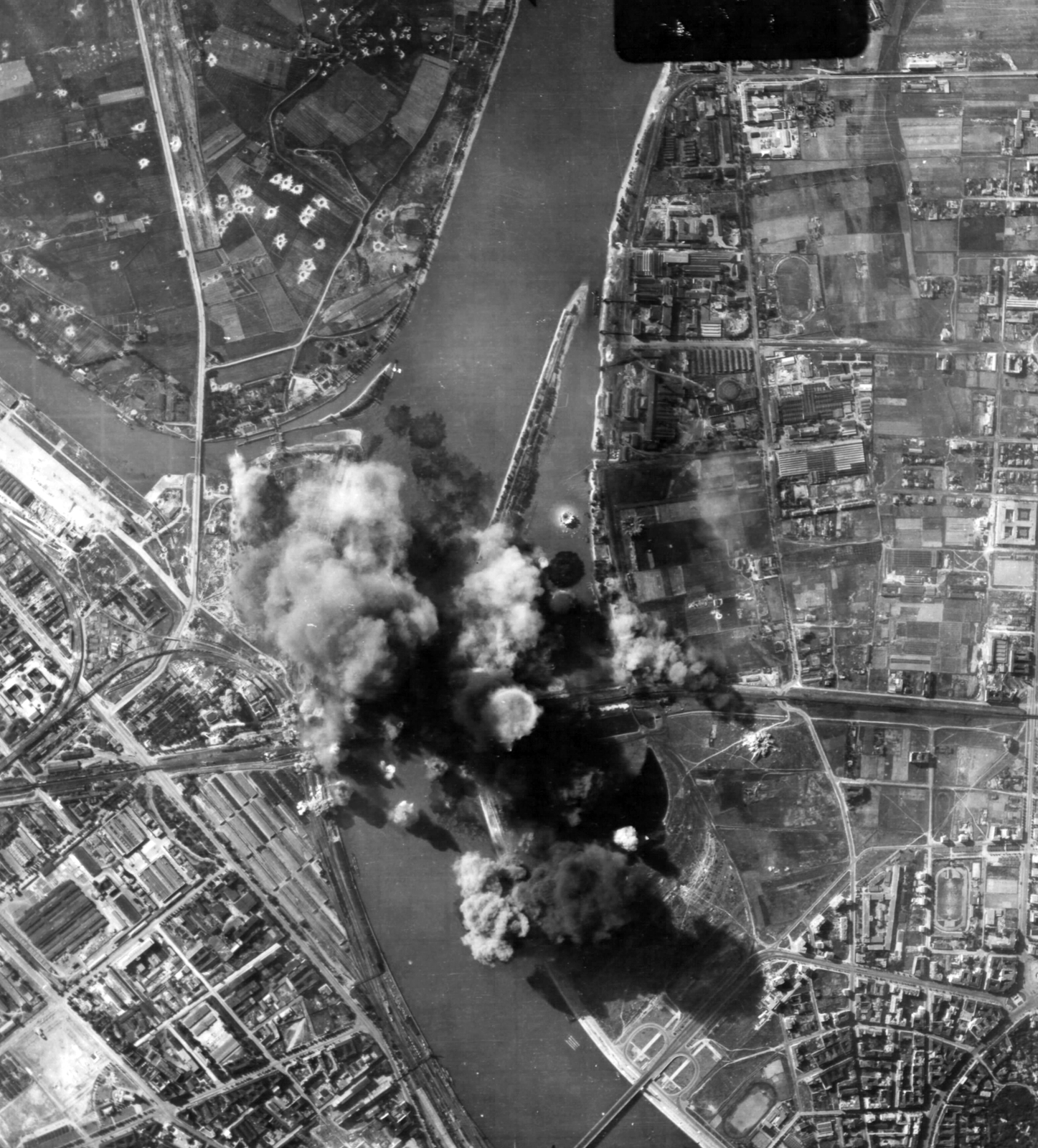 The bombing of the bridge in late 1944 (Photo: Fortepan/National Archives )
The bombing of the bridge in late 1944 (Photo: Fortepan/National Archives )
The handover of the bridge was a huge holiday, a large crowd poured out, even though the weather was not really good as it was raining. A wooden tribune was carved for the illustrious guests, but the opening event itself was different, as reported in the 4 November 1946 issue of Kossuth Népe:
“The Pest bridgehead of the bridge, decorated with huge national flags, is waiting for the grand opening. The entrance to the bridge is closed by a thick ribbon of national colour, which will be torn off by the locomotive of the train crossing the bridge with the President of the Republic and the invited guests on it. Behind the grandstand is the train decorated with flags and ribbons and four parlour cars.”
The Ceremonial Regiment withdrew, there were speeches, a gala dinner, and festive receptions in the evening, two of them, one in the Gellért Hotel and one in the MÁVAG Golgota Road cultural hall. Indeed, one of the most important bridges in the country was completed, the only one that provided a permanent and secure rail connection over the Danube. Alongside the “K” bridge, the construction of the permanent bridge was started almost immediately, because it was only single-track and trains could only run on it at a maximum speed of 40 kilometres. In fact, two bridges were built, one already handed over in 1948 and then the second new, permanent structure in 1953.
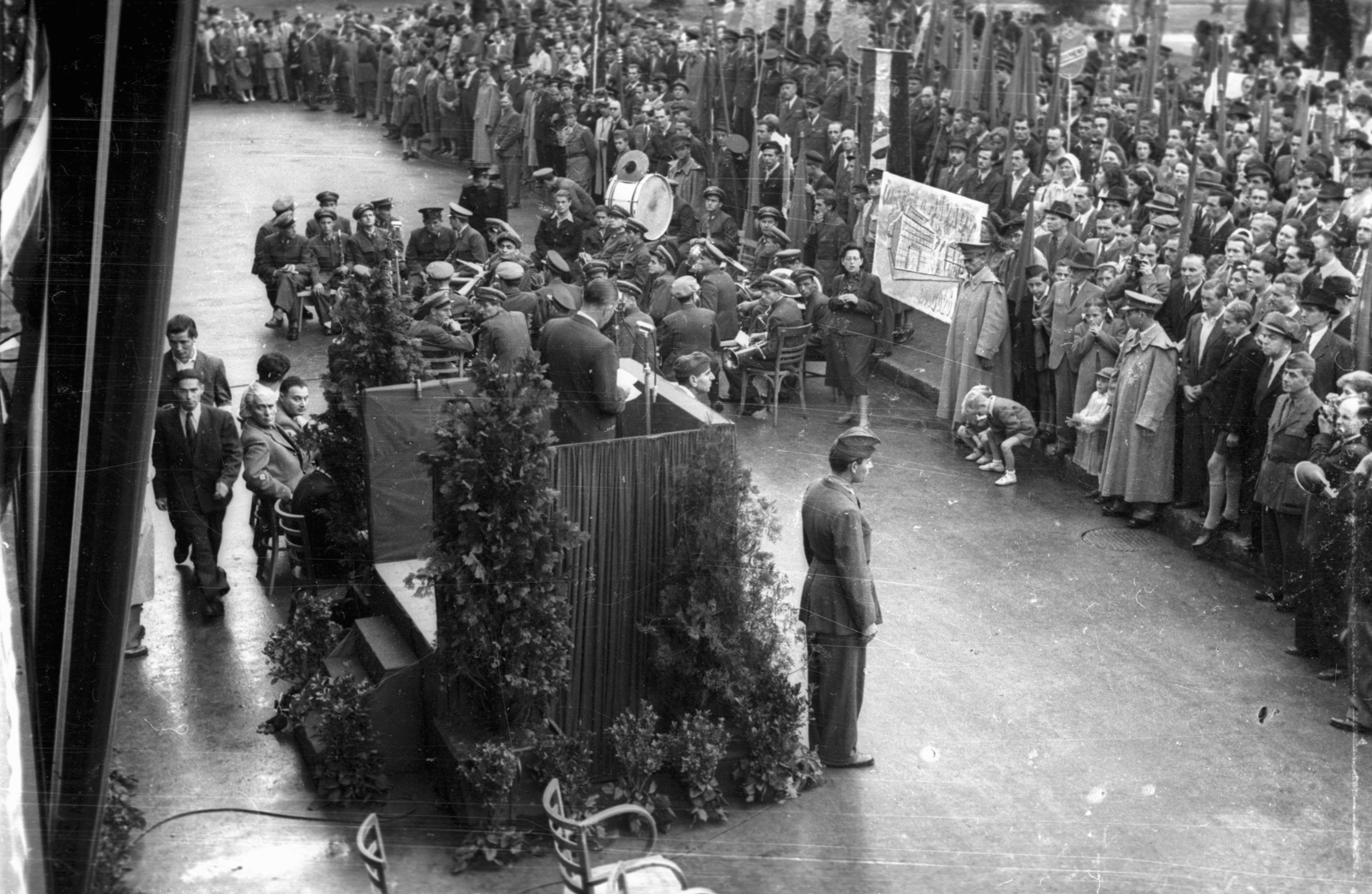 Handover of the bridge (Photo: Fortepan/Uvaterv)
Handover of the bridge (Photo: Fortepan/Uvaterv)
The grimace of fate is that the temporary “K” bridge ultimately did not serve for a much shorter time than the permanent bridges built next to it. Namely, a significant part of the structure that became redundant and dismantled at the Connecting Railway Bridge in 1953 was used at the northern, Újpest railway bridge. There, the “K” structure remained in place until 2008.
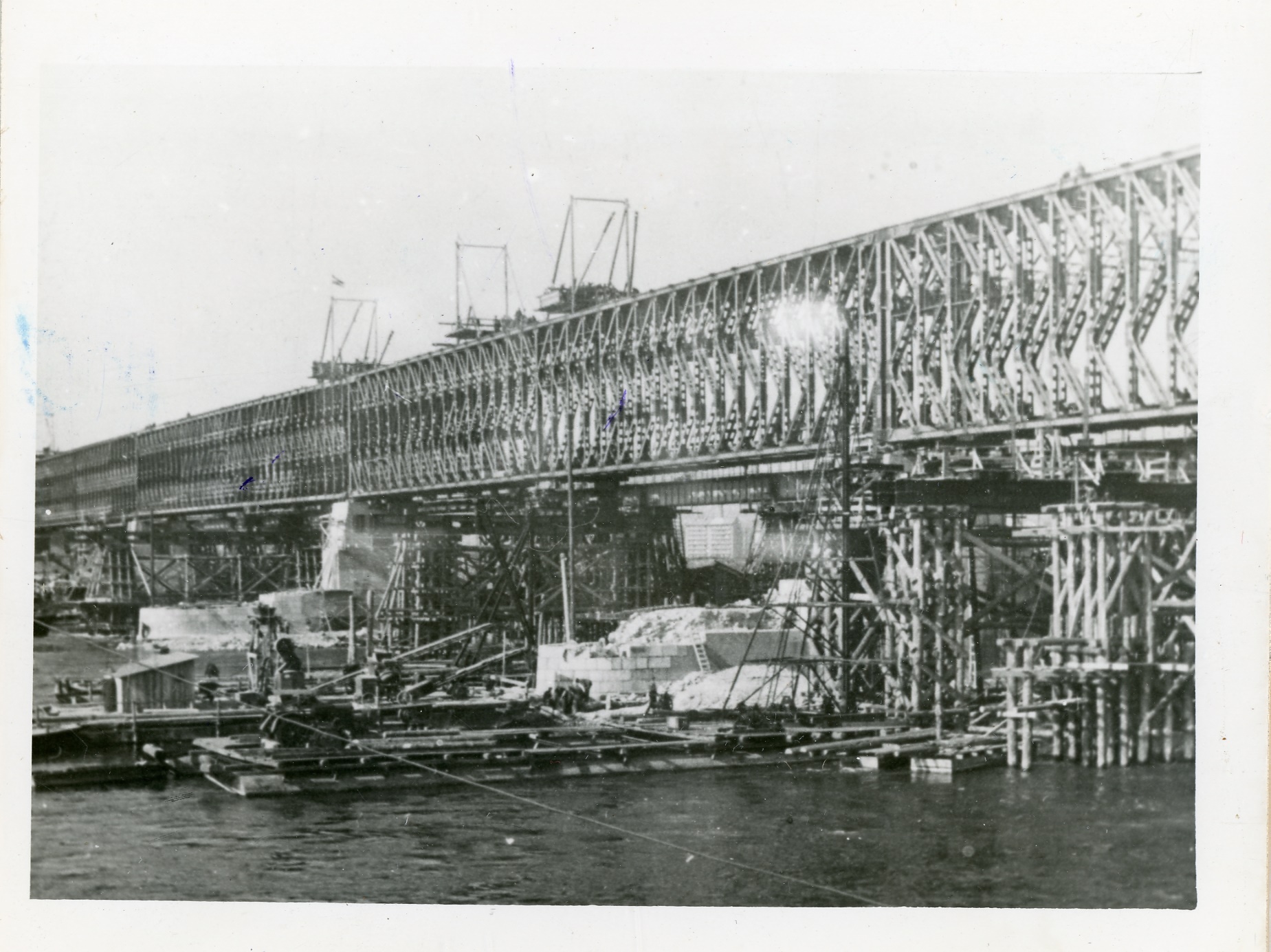 Construction of the bridge (Photo: Hungarian Museum of Science, Technology and Transport/Collection of Historical Photos, No.: 2242.1)
Construction of the bridge (Photo: Hungarian Museum of Science, Technology and Transport/Collection of Historical Photos, No.: 2242.1)
And the Connecting Railway Bridge will be demolished nowadays, in 2020-2021, that is, it lasted only 12-13 years longer than its predecessor with a temporary structure.
Cover photo: The construction of the bridge, and the temporary crossing behind it (Photo: Hungarian Museum of Science, Technology and Transport/Collection of Historical Photos, No.: 2233.1)

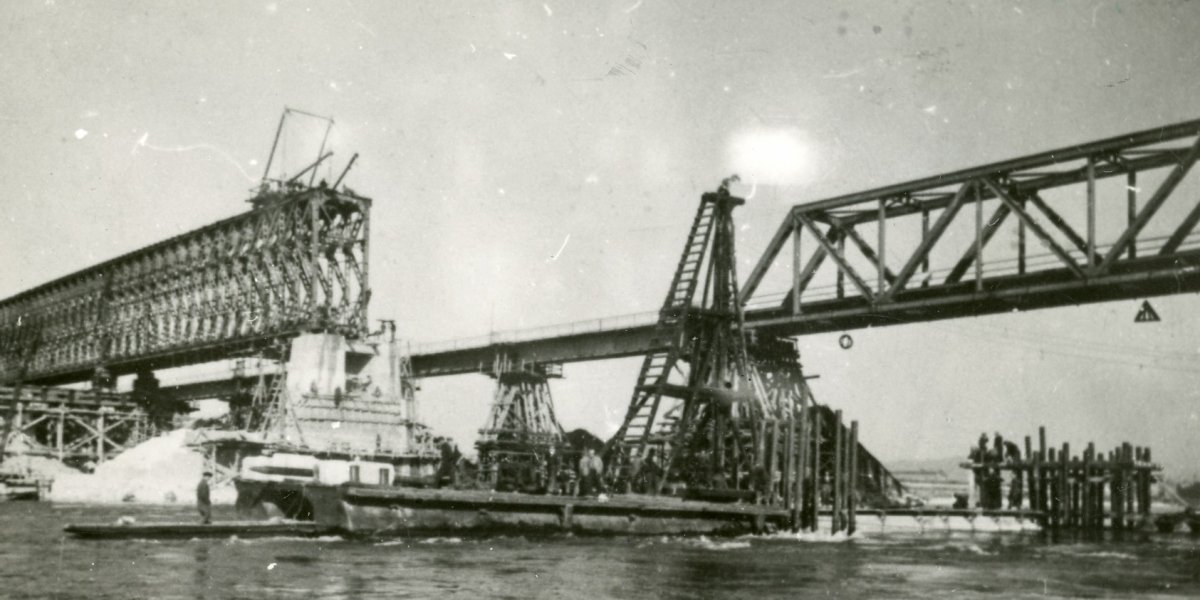


































Hozzászólások
Log in or register to comment!
Login Registration